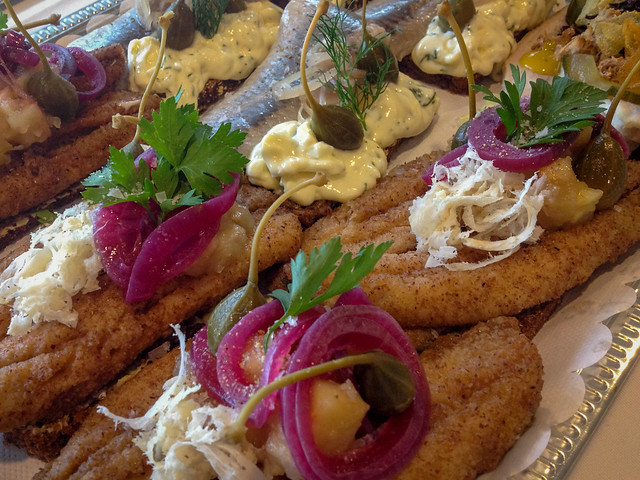It’s delicious, it’s distinctly Nordic, it’s relatively healthy, and it’s surprisingly more complicated than one would think. What is it? It’s Danish Smørrebrød or “Smorrebrod”. In the past I’ve written about local Danish cuisine and more specifically the every-day variety of Danish smørrebrød while suggesting several local hole-in-the-wall venues around Copenhagen where cheap and delicious smørrebrød could be found. Today I want to talk about the other end of the spectrum – fancy Danish Smørrebrød.
In recent years Nordic cuisine has exploded onto the international stage led by restaurants such as Copenhagen’s world famous Noma restaurant. These foods are known for using fresh, local ingredients in innovative ways to create flavorful plates that are both a delight to taste and a feast for the eyes. One incarnation of this push towards fancy Nordic food has been a re-visit of one of the staples of the Danish diet. In so doing, modern high end restaurants have re-worked smørrebrød while capitalizing on the food’s inherent inclination towards color, attractive appearance, and diverse use of ingredients.
I recently had the opportunity while in Aalborg to sample a mixture of re-imagined modern smørrebrød at Utzon Restauraunt. The venue is situated in a gorgeous center that overlooks the city’s fjord while providing a great modern-Danish backdrop. The food served consisted of beautifully colored and portioned pieces of smørrebrød which used ingredients such as steak tartare, herring, various fish fillets, giant capers, beats, giant asparagus, shrimp, fish eggs, pickles, dill, fresh onions, Danish remoulade, and of course the cornerstone of it all – Danish rugbrød.
While all of the smørrebrød we sampled was fantastic, I think the most unusual was the steak tartare which had raw ground beef and used fluffy white bread in place of the traditional dark rugbrød. Accompanied by sauce, onions, pickles, giant capers, potato chips and greens it had a light, fresh, flavor which nicely accompanied the meat without being overpowering. During previous meals I had encountered more basic versions of the other variations of smørrebrød we tried, but in the case of the steak tartare it was the first time I’ve seen raw meat used. While not for the feint of heart, I can say I eagerly await my next opportunity to dive into a similar variation on traditional smørrebrød.
You can find my previous post on budget smørrebrød in Copenhagen here. Have you had any experiences with smørrebrød? I’d love to hear what you thought of it!
